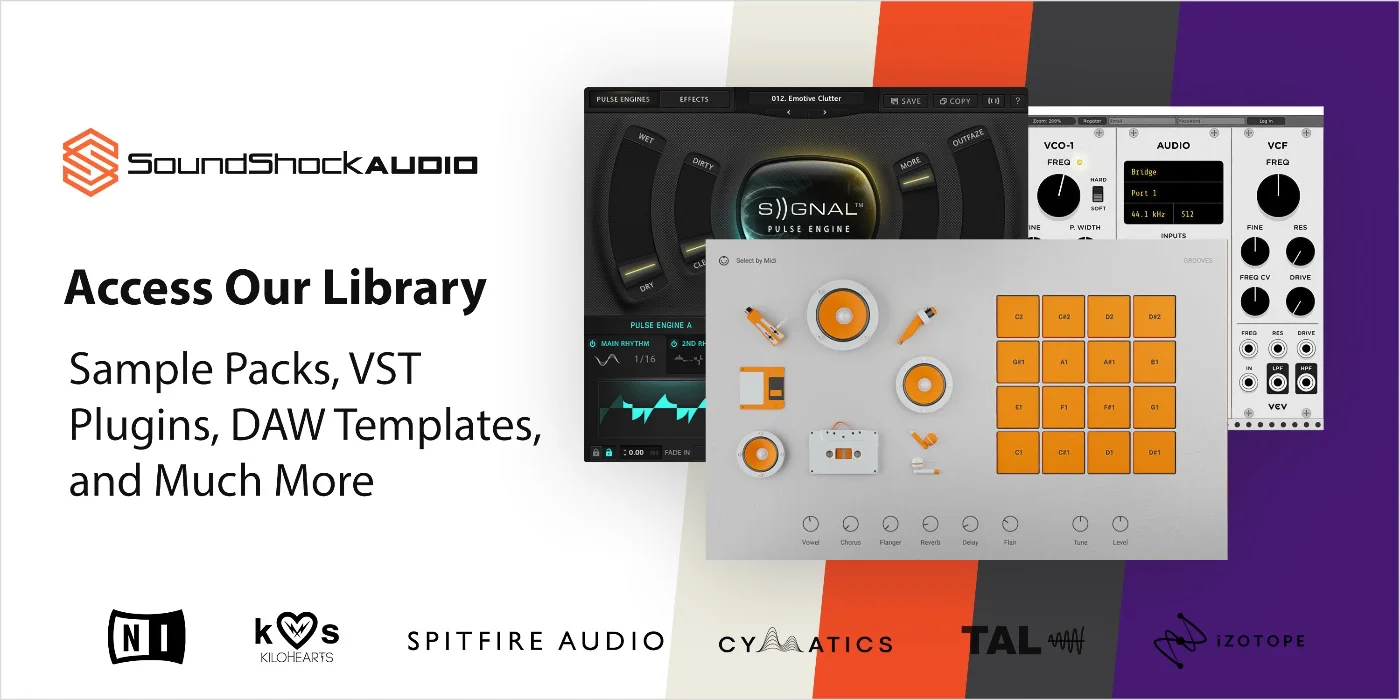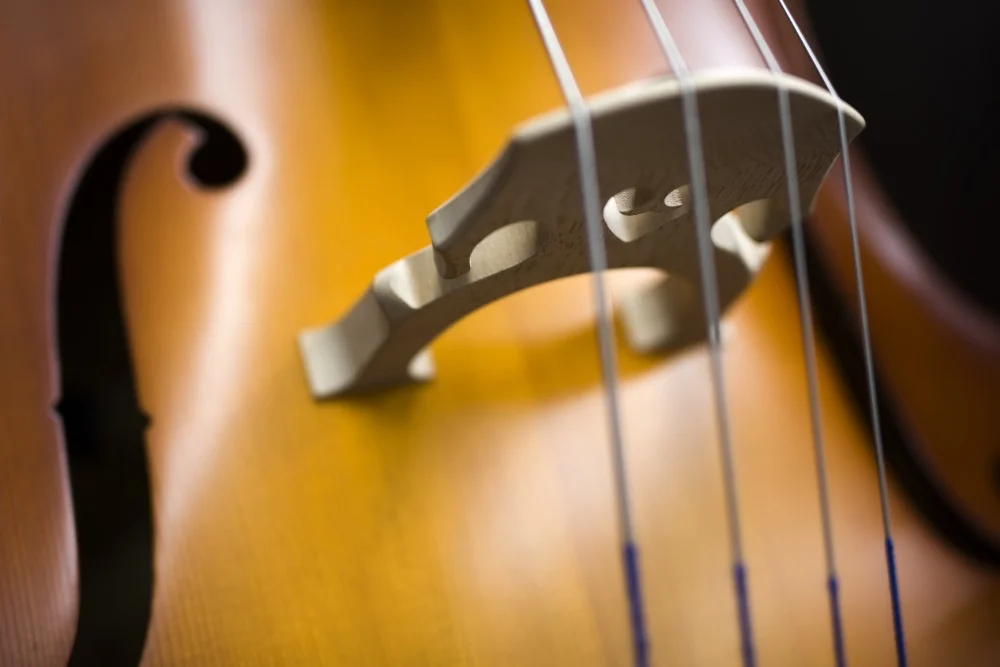Are you a musician looking for the perfect sound when it comes to EQing your upright bass? Well, look no further! The Ultimate Guide To EQing Upright Bass is here to make sure you get the exact tone and resonance that you need. Whether you’re just starting out or have been playing for years, this guide will provide all the information necessary to create an unforgettable musical experience.
EQing an instrument correctly can be daunting but with a few simple steps anyone can achieve incredible results. I’ve put together some of my most successful techniques in order to help any aspiring bassists learn how to properly adjust their instruments’ frequencies. You’ll come away knowing exactly what needs tweaking and why – enabling you to improve both live performances as well as recordings every single time.
So if you’re ready to take your music up a notch, then read on and discover the secrets of getting the best possible sound from your beloved upright bass!
Overview Of Eqing Upright Bass
EQing upright bass is an important part of the recording process. It can make or break a song, so it’s crucial to get it right! In fact, studies show that 80% of professional sound engineers spend more time on this one instrument than any other in their mixes. As an expert in EQing upright bass, I know how difficult and rewarding this task can be.
The goal when EQing upright bass is to create a natural-sounding tone with great clarity and depth – not too much boominess or harshness. You’ll want to adjust both the highs and lows while still preserving the overall character of the instrument. To do this successfully, you need to choose the right microphone for your particular setup as well as have a good understanding of what frequencies are most important for each type of music. This will help ensure that your recordings come out sounding great every time! With all these pieces in place, let’s move on to selecting the ideal mic for our needs.
Choosing The Right Microphone
When it comes to EQing an upright bass, the right microphone selection and placement is essential in achieving a great sound. To get started, first consider the types of microphones that are most commonly used to record this instrument – ribbon mics, dynamic mics, condenser mics, etc. Each has its own unique characteristics that can bring out different tones from your instrument. Additionally, there’s no one-size-fits-all approach when positioning a mic for recording an upright bass; experimenting with different placements will help you find the best setup for your particular situation.
Once you’ve settled on a type of mic and determined its position relative to the sound source (the bass), it’s time to start exploring microphone techniques. This could include using multiple mics at once or even employing specialized room acoustics to capture a more natural vibe. The possibilities are endless; all that matters is finding what works for you and your playing style. Whether you’re looking for warm vintage tones or modern clarity, by taking the time to experiment with various microphone selections and placements you’ll be able to create the perfect tone every time!
Proper Placement Of Microphones
When it comes to eqing an upright bass for the perfect sound, proper mic placement is key. It’s essential to get the microphones in just the right spot and angle to capture your desired tone. Knowing where to position the microphone can be tricky so here are some tips on optimal positioning.
When setting up mics for recording or live performances, start with a few basic principles of bass mic placement. Place one mic close to the bridge, angled toward the fingerboard side of the strings about 1-3 inches away from them. This will capture more higher frequencies as well as depth and articulation. Aim another at the tailpiece side of the instrument; you’ll want this one a bit farther away (about 6-9 inches) if it’s going into a PA system. When recording in a studio, use two cardioid condenser mics positioned either 45 degrees off axis or 90 degrees apart depending on how much bleed you want from other instruments in the room. Experiment with distance between mics until you find what works best for your overall bass sound optimization needs.
By following these guidelines for proper mic placement when eqing an upright bass, you should be able to achieve that ideal tone every time! Now let’s move onto making frequency adjustments…
Frequency Adjustments
Eqing upright bass is an art – one that requires diligence, skill, and a keen ear. When it comes to frequency adjustments, the goal is not just to get your sound right but also to make sure you don’t overdo it. To start off, adjust the low-end frequencies and then move up in increments of 5 Hz or so until you’ve reached about 60 Hz for most applications. This will help bring out the richness of the bass without sacrificing clarity.
Next, focus on the high-end frequencies around 2 kHz. Here’s where you can really dial in your EQ settings to ensure there’s no harshness in the upper register while still preserving plenty of definition and articulation. Depending on how much presence you want in this range, feel free to boost or cut as necessary – just be careful not to go overboard!
By making these small changes and tweaks with precision, you’ll soon find yourself crafting a perfect mix every time with ease. With that being said, let’s take things further by compressing the signal for added control over our tone.
Compressing The Signal
Compressing the signal of an upright bass is a powerful way to make it stand out in the mix. When eqing, you’ll want to adjust your compression settings to get that perfect sound you’re looking for. Setting the compression ratio and thresholds correctly will allow you to control how much of the signal gets crushed when hit with low notes or high notes. You should also be mindful of using too much compression as this can lead to a muddled sound, so use it sparingly. With careful adjustment, you can achieve great results when compressing an upright bass track.
Next up is applying reverb and delay effects to complete the desired soundscape and sonic texture.
Reverb And Delay Effects
The use of reverb and delay effects is essential for achieving a professional sound when eqing an upright bass. From subtle space to extreme echo, these effects have the ability to transform your mix into something truly special. When used properly, they can add depth, clarity, and warmth to any track.
When applying reverb or delay effects to an upright bass track, it’s important to consider both their frequency content and overall dynamics. Reverbs should be kept low in terms of gain and level – too much will make the instrument muddy and unfocused. Delays should also be carefully managed; short delays are great for adding definition and punch while longer delays create interesting rhythmic textures that help give the instrument character. The key here is balance: you want enough effect to enhance the tone but not so much that it overpowers the other elements in your mix. With some experimentation, you’ll soon find the perfect amount of each effect for your particular setup.
Now that you’ve mastered reverb and delay effects on your upright bass track, it’s time to finalize your mix.
Finalizing Your Mix
Now that you’ve applied reverb and delay effects to your upright bass, it’s time to finalize your mix. This is the most important step in creating a great sounding track – getting the perfect balance of volume between all instruments. To do this, start by adjusting the overall level of the bass. Make sure it sits in the mix well without overpowering any other instrument or element. You can then use an EQ to shape the sound further, taking care not to overdo it and make it too bright or boomy.
Next comes panning – decide where in the stereo field each part should sit for best effect. For example, putting a solo line on one side and supporting lines on the other will give more separation and clarity for both parts. Finally, experiment with compression – just enough to even out levels and add some extra punch when needed. Don’t be afraid to try different settings until you find something that sounds good! With careful mixing and eqing of your upright bass, you’ll get professional-level results every time!
Frequently Asked Questions
What Is The Best Way To Record An Upright Bass In A Live Setting?
Securing the perfect sound for your upright bass in a live setting is an art form. Crafting the ideal EQ mix to capture every nuance of playing requires precision and patience. But with some essential tips, you can quickly achieve optimal results when recording your upright bass in any environment.
From choosing the right equipment to strategically placing microphones around the instrument, it’s important to pay close attention to each step in order to get that authentic live sound. Start by selecting the best mic for capturing your instrument’s low end frequency range; dynamic mics are often more suitable than condenser mics because they help reduce unwanted background noise from other instruments on stage. Additionally, make sure you have enough room between the microphone and the bass itself as having too much proximity will create an unnatural booming effect. If available, use two different types of mics and experiment with placement angles to find which one works best for your particular situation and setup.
When ready to record, listen closely while adjusting the EQ settings until you get just the right balance – not too muddy or over-processed but still warm and full sounding – that captures both tone and dynamics of your performance perfectly. Keep in mind that even minor adjustments can greatly affect how well your sound carries out into a live audience so take extra care when dialing in those settings for maximum impact! With these simple steps, you’ll be ready to capture optimal sound quality from your upright bass whenever needed.
How Can I Achieve The Most Authentic Sound Possible?
When it comes to achieving the most authentic sound possible when recording an upright bass, there are a few key elements to consider. To capture its natural warmth and vintage tone, acoustic sounds should be prioritized over electric effects. In addition, pure tones with minimal processing will create a more honest representation of the instrument’s unique character.
Fortunately, modern technology makes it easy to record uprights in their original state without sacrificing quality or clarity. Many engineers opt for ribbon microphones as they provide unparalleled accuracy and help retain the instrument’s signature qualities. Additionally, high-quality preamps ensure that every subtle nuance is captured accurately while still maintaining a clean signal. These tools can make all the difference in capturing an organic and realistic sound that truly conveys the beauty of this classic instrument.
To achieve ultimate success with your recordings, these pieces of equipment must be properly combined. The right microphone positioned close enough to pick up low frequencies yet far enough away so as not to distort them is essential; this ensures each note rings out clearly without any unwanted artifacts coloring the mix. Coupled with precise EQ settings tailored specifically towards accentuating the instrument’s strengths, you can be sure that your tracks will carry a stunning degree of realism and authenticity no matter what genre you’re playing in!
What Techniques Can I Use To Make Sure The Bass Stands Out In A Mix?
Achieving the perfect bass tone in a mix can be an intimidating task, but with some eq sculpting techniques and bass instrument isolation you can easily get your bass to stand out. As an upright bass EQ expert, I’m here to share my tips for mastering the art of mixing bass parts so that your low-end frequencies are balanced and full of life.
To start off, shaping the tone of your bass is essential if you want it to cut through any track. Whether you’re using low or high pass filters or boosting mid ranges or treble frequencies, understanding how each adjustment affects your sound will help achieve clarity without muddiness. Additionally, isolating the instrument itself from other instruments in the mix is key for getting a fuller dynamic range when recording direct input signals. This allows more control over individual levels and results in a better overall balance between all elements.
Beyond just tonal considerations, there are also important technical aspects to consider when mixing a live performance such as avoiding masking effects on other instruments by ensuring sufficient headroom and panning appropriately. A little experimentation goes a long way – trying various combinations until you find something that works best for your particular setup will ensure that no matter what style music you’re creating, you’ll have a strong foundation for great sounding mixes every time! So don’t be afraid to take risks and explore different approaches – chances are good that your hard work will pay off!
What Type Of Eq Should I Use For An Upright Bass?
When it comes to equalizing an upright bass, it’s important to know what type of EQ to use. There are a variety of techniques and settings available for bass eqing, but the most effective ones will depend on the track you’re working with and your desired outcome.
Using EQ on the bass can help bring out its low-end punch while still maintaining clarity in the mix. To achieve this balance, start by cutting excess lows at around 50Hz or below with a high pass filter. This will help prevent excessive mudiness from building up in the lower frequencies. Additionally, adding a boost at around 500Hz and 4kHz can give the sound more presence and definition. You may also want to add some gentle compression to further emphasize certain notes and create a smoother overall tone.
For mastering purposes, use subtle amounts of both shelving boosts and cuts as needed – typically between 3dB and 6dB – to really make the instrument stand out without overwhelming other elements in the mix. Applying these techniques correctly should result in a cohesive yet powerful sounding upright bass that stands out in any track!
How Can I Adjust The Tone Of The Upright Bass Without Affecting Other Instruments In The Mix?
Adjusting the tone of an upright bass without affecting other instruments in the mix is a tricky task. But, with some practice and dedication, you can achieve great results! As an expert on EQing upright basses, I’ve found that there are several techniques which can be used to create a perfect sound every time – regardless of what else may be present within your mix.
One approach is to use frequency-specific compression. This helps to level out any loud notes or tones from the instrument so as not to overpower other elements in your track. Another technique is to adjust the overall treble and bass frequencies – this will allow you to shape the character of the upright bass without having too much impact on anything else in your mix. Finally, by using various filters it’s possible to reduce unwanted noise from spilling over into adjacent tracks. These three methods combined should give you a great foundation for achieving the desired tone while avoiding any potential problems with other instruments in your music production project.
By taking these simple steps, you’ll soon find yourself mastering eqing an upright bass without detrimentally affecting other instruments in the mix. Allowing you to get creative and experiment until you have achieved exactly what you’re looking for when it comes to creating unique sounds each time.
Conclusion
In conclusion, it’s clear that EQing an upright bass is a complex task. With the right knowledge and techniques, however, you can get the perfect sound every time! What’s even more amazing is that 80% of professional studio engineers consider eqing to be one of their most important skills for producing great sounding recordings.
That statistic alone should motivate you to take your craft seriously and start mastering EQ today. By understanding how to shape the tone of your instrument with precision, you’ll unlock its full potential in any mix or recording situation. Plus, you won’t have to worry about affecting other elements of the track – unless I want them too!
So if you’re serious about taking your recordings and mixes to the next level, then learning how to eq upright bass is essential. From mic placement tips to choosing the correct type of EQ, there are plenty of resources out there that will help me achieve my desired results quickly and easily. Thanks for reading this guide on eqing upright bass – now go forth and create some awesome music!
Looking for the best free music production tools available?

SoundShockAudio has got you covered. Save time Googling for free tools and subscribe today and access our vast library of over 4,000 tools to create professional-sounding music.
Need more help when it comes to EQing? Check out the article, how to eq tambourine.
Also check out this other article how to eq overheads, for more EQing tips.




